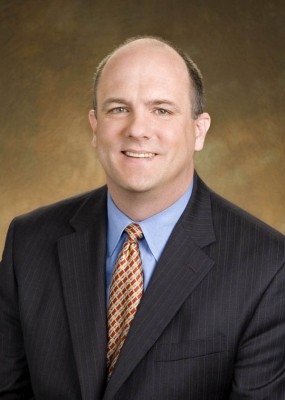The California ISO manages 6,000 miles of transmission lines, balances its grid every four seconds, and optimizes it every five minutes. The organization manages 20% of its power from renewable energy and plans on 30% or more by 2020. That was the message from California ISO CEO Steve Berberich at the recent AWEA WINDPOWER 2016 conference. AWEA Senior VP Rob Gramlich sat down with Berberich for a discussion of current events and plans for the future that revealed California a bellwether state for the world.
The job of the California ISO is to provide access to the transmission system, activity that is annually worth about $90 billion. “We also operate with a day-ahead spot market to find the most efficient dispatchable power,” said Berberich. As Gramlich suggested, the ISO is something like air-traffic control operation.
Berberich acknowledges challenges and opportunity. “As the grid becomes more complicated and as more distributed generation comes online, we get more inflections on the grid. So the challenge is more difficult but also an opportunity to let California show the world how it can work, and as efficiently as possible,” he said.
So how much renewable energy is online in California now? Keep in mind, suggests Berberich, that California is the 7th or 8th largest economy in the world, depending on how Italy or Russia is doing at any given time. “During a recent weekend, 50% of the state’s load was served by renewables – about 12,000 MW. It was sunny, the wind was blowing, and everything was matching up well,” he said.
Berberich also suggests that this shows how a large economy can decarbonize. “We had about 5,000 to 6,000 MW of wind on the system, about 7,000 MW of solar, along with geothermal and other sources. More importantly, we will go to 30% by 2020 and we are well ahead of schedule on that. Then we expect to go to 50% renewable energy on the grid by 2030, and we are fairly certain we will be ahead of schedule on that too.”
Berberich is convinced that will happen all the while keeping the lights on, even though there are times when the wind does not blow or the sun does not shine. “A key is to not keep doing things the way we have been. For instance, California is a sunny place, but focusing only on solar would create over generation in the middle of the day. That means it is crucially important that all resources are available. Historically, grid planning was to have a portfolio of resources such as gas, coal, and nuclear.” The same idea holds in the renewable-energy era. It needs wind, solar, geothermal, and others.
Consider too, says Berberich, that California has a couple hundred thousand electric vehicles, or EVs, now and expectations are for a couple million in the coming years. “Let’s ask: When do those vehicles charge and how do they charge? The policy around those vehicles and how wind and solar provide power to the system is important. Also, you get regional effects of renewable energy. For example, Iowa enjoys a significant penetration of wind, and is on a path to get to 85% and at some point, 100%. They can only do that because of its large Midcontinent ISO. It is possible to apply a lot of geographic resources to work on such goals. It’s important to California, too, because I don’t anticipate stopping at 50%. I expect us to hit higher figures.”
For that California can take advantage of Wyoming wind or New Mexico wind. Berberich joked that when in Wyoming recently, the wind was so strong it made his hair blow. He is bald.
Gramlich concluded the interview by observing that regional coordination is the key to renewable energy’s future success. Fifty percent is one goal for the California ISO and Berberich expects to hit that figure and keep going.
Paul Dvorak / Editor / Windpower Engineering & Development
Filed Under: News, Policy






